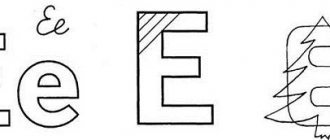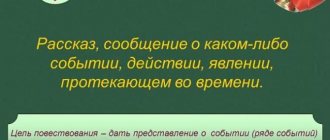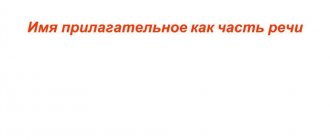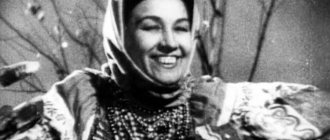Relevance
In the light of modern requirements for teaching the Russian language, the text is considered as the central unit of teaching, and therefore it is advisable to use text work as widely as possible, develop rational reading skills, and teach text analysis.
Strategies for meaningful reading, formulated by the Federal State Educational Standard, include information search and reading comprehension, transformation, interpretation and evaluation of information. All this can be called components of multidimensional text analysis.
What is text analysis? “Analysis,” from the ancient Greek “decomposition, dismemberment,” involves the study of the parts that make up a text. The choice of these parts and the direction of analysis depends on what goals the researcher sets for himself.
If we want to study the form, structure of a text, its linguistic features, then this will be a linguistic analysis of the text.
If we focus our attention on vocabulary and phraseology, then this will be a lexical-phraseological analysis.
Analysis of a text from the point of view of its content and form in their unity is a holistic or complex analysis, which is the task of the Literature Olympiad. And so on.
In this article we will focus on linguistic analysis.
Scheme of linguistic text analysis
- What type of speech is the text in front of you? (Narration, description, reasoning, their combination; genre features of the text);
- What is the composition of the text (number of semantic parts, micro-themes of these parts);
- What is the nature of the connection between sentences in the text? (chain, parallel or mixed);
- By what means is the connection between sentences in the text made? (lexical and grammatical);
- What style of speech does the text belong to? (General stylistic features of this text);
- What is the topic of the text? By what means of language is the unity of the theme conveyed? (Lexical, morphological, syntactic and other means of expression);
- What is the idea of the text (main idea);
Series of lessons “Linguistic text analysis”
2. Determine the type of speech (narration, description, reasoning). Indicate the means of communication between sentences in the text. (Lexical: synonyms, antonyms, repetition of words. Grammatical: conjunctions, relationship between types and tenses of verbs, pronouns, cognates. Syntactic: word order, the role of interrogative and exclamatory sentences, direct speech, complex or simple syntactic constructions). Determine the composition of the text, make a plan.
3. Determine the style of speech in the text. (Fiction, popular science, journalistic, conversational, business...). Name the style techniques (lexical, grammatical, syntactic features; target orientation of the text).
Reference. Features of journalistic style:
— Style goal
- convey information important to society, influence the reader and listener, convince him of something, call him to something. The theme of the work of journalistic style is socio-political events and phenomena.
— Sphere
use of style - articles, notes in magazines, newspapers, reports, essays, letters, essays, reviews.
— Linguistic signs – introductory words; appeals; incentive interrogative, exclamatory sentences; rhetorical questions; incomplete sentences; use of socio-political vocabulary, phraseological units, words in a figurative meaning; admissibility of words from colloquial and book vocabulary; use of personal pronouns; a clear author's position, expressed using emotional adjectives and adverbs; use of verbs in the imperative mood.
4. Make a reading score (logical stresses, large and small pauses, raising and lowering voices, speech rate, intonation).
5. Repeated expressive reading of the text.
Presentation of text describing the action.
Goals:
Continue familiarization with the description of an action, the role of these descriptions in speech, the role of adverbs in the description of an action.
Formation of skills in determining the topic, idea of the text, linguistic means (epithet, comparison, metaphor).
Fostering an aesthetic attitude towards nature; responsible attitude towards the work entrusted to you.
Equipment for the lesson.
Cards with the text “Mow, scythe!” A. Musatova.
During the classes.
Communicate the topic and objectives of the lesson.
Repetition of knowledge about the description of actions. Write on the board:
A) Maintaining consistency of description, clarity of description, accuracy of description.
B) The role of adverbs (brightness of speech, repetition can be avoided).
Reading the text “Mow, scythe!” A. Musatova.
Mow, scythe!
Sanka was glad that he woke up so early. Still would! After all, there is no more embarrassment than showing up in a meadow when work is already in full swing there. Throwing his braid over his shoulder, Sanka headed towards the office.
Main characteristics that can be analyzed in the text
- General stylistic features of this text:
- Genre features of the text:
- Lexical means of expression:
- Means of artistic expression characteristic of artistic and journalistic styles:
- Phonetic level – sound figurative means:
- Morphological means of expression:
- Syntactic means of expression:
Comprehensive text analysis plan (grades 9-11)
Comprehensive text analysis plan
(grades 9-11)
1. Read the text. When reading, use intonation underlining, highlighting both individual words and semantic segments. 2. Remember what you know about its author. (When did he live, in what era? What literary movement did he belong to? What was he famous for?) If you don’t know, try to find out from reference books. 3. What functional style of speech does the text belong to? (For artistic, journalistic, scientific/popular science.) 4. What type of speech is the text? (Description, narration, reasoning.) 5. What genre does the text belong to (an episode of a work of art, an essay, a memoir, a parable, a legend, a prose poem, etc.)? 6. What mood prevails in the text? 7. Determine the topic of the text. 8. If the text does not have a title, title it. If there is already a title, think about its meaning (why the author chose this title). 9. Divide the text into semantic parts, make a text plan for yourself. 10. How are parts of the text connected? Pay attention to lexical and syntactic means of communication (repeated words, syntactic parallels or, conversely, a sharp change in syntactic structures and intonation, word order in sentences). 11. How do the beginning and end of the text relate? 12. What technique/techniques is the text based on (comparison, contrast; gradual intensification of feelings, gradual development of thoughts; rapid change of events, dynamism; leisurely contemplation, etc.)? 13. Mark the main images of the text (don’t forget about the image of the author). 14. Observe the vocabulary of the text: Find unfamiliar or incomprehensible words and determine their meanings using a dictionary. Pay attention to the spelling of these words. Find keywords in each part of the text. Are people determined by their choice? Observe various repetitions (anaphors, epiphoras, lexical repetitions, repetitions of cognate words). What are they due to? Find lexical and contextual synonyms and/or antonyms in the text. Find paraphrases. For what purposes are they used? K • Find polysemantic words and words used in the text in a figurative meaning. Pay attention to the style of the vocabulary, the use of archaisms, historicisms, neologisms of terms; into evaluative words, colloquial, vernacular or, conversely, the elephant of a sublime style. Why did the author use them? V • Highlight phraseological units. Why are they used? Pay attention to the means of artistic expression and figures of speech, if they are used by the author (epithets, metaphors). (CL 9-11) 1. Read the text. When reading, use intonation underlining, highlighting both individual words and semantic segments. 2. Remember what you know about its author. (When did he live, in what era? What literary movement did he belong to? What was he famous for?) If you don’t know, try to find out from reference literature. 3. What functional style of speech does the text belong to? (For artistic, journalistic, scientific/popular science.) 4. What type of speech is the text? (Description, narration, reasoning.) 5. What genre does the text belong to (an episode of a work of art, an essay, a memoir, a parable, a legend, a prose poem, etc.)? 6. What mood prevails in the text? 7. Determine the topic of the text. 8. If the text does not have a title, title it. If there is already a title, think about its meaning (why the author chose this title). 9. Divide the text into semantic parts, make a text plan for yourself. 10. How are parts of the text connected? Pay attention to lexical and syntactic means of communication (repeated words, syntactic parallels or, conversely, a sharp change in syntactic structures and intonation, word order in sentences). 11. How do the beginning and end of the text relate? 12. What technique/techniques is the text based on (comparison, opposition; gradual intensification of feelings, gradual development of thoughts; rapid change of events, dynamism; leisurely contemplation, etc.)? 13. Mark the main images of the text (don’t forget about the image of the author). 14. Observe the vocabulary of the text:
- Find unfamiliar or unclear words and find out their meanings using a dictionary. Pay attention to the spelling of these words.
- Find keywords in each part of the text. Are people determined by their choice?
- Observe various repetitions (anaphors, epiphoras, lexical repetitions, repetitions of cognate words). What are they due to?
- Find lexical and contextual synonyms and/or antonyms in the text.
- Find paraphrases. For what purposes are they used?
- Find polysemantic words and words used in the text in a figurative sense.
- Pay attention to the style of the vocabulary, the use of archaisms, historicisms, neologisms of terms; into evaluative words, colloquial, vernacular or, conversely, the elephant of a sublime style. Why did the author use them?
- Highlight phraseological units. Why are they used?
- Pay attention to the means of artistic expression and figures of speech, if they are used by the author (epithets, metaphors).
An example of linguistic text analysis
Linguistic analysis of a work or text is carried out with the aim of studying the form, structure of the text, as well as its linguistic features. It is carried out in Russian language lessons and shows the student’s level of understanding of the meaning and vision of the peculiarities of the linguistic organization of the text, as well as the student’s ability to present his own observations, the degree of proficiency in theoretical material and terminology.
As an example, we will conduct a linguistic analysis of an excerpt from Richard Bach’s story “Jonathan Livingston Seagull.”
Text
He felt relieved that he had made the decision to live as the Pack lived. The chains with which he chained himself to the chariot of knowledge fell apart: there will be no struggle, there will be no defeat. How nice it is to stop thinking and fly in the dark towards the shore lights.
- Darkness! – suddenly an alarming dull voice rang out. - Seagulls never fly in the dark! But Jonathan didn't want to listen. “How nice,” he thought. “The moon and the reflections of light that play on the water and create paths of signal lights in the night, and everything around is so peaceful and calm...”
- Come down! Seagulls never fly in the dark. If you were born to fly in the dark, you would have the eyes of an owl! You wouldn't have a head, but a computer! You would have short falcon wings!
There, in the night, a hundred feet above, Jonathan Livingston narrowed his eyes. His pain, his decision - not a trace remained of them.
Short wings. Short falcon wings! That's the solution! “What a fool I am! All I need is a tiny, very small wing; all I need to do is fold the wings almost completely and move only the tips while flying. Short wings!
He rose two thousand feet above the black mass of water and, without thinking for a moment about failure, about death, he pressed the wide parts of his wings tightly to his body, exposed only the narrow ends, like daggers, to the wind - feather to feather - and entered the vertical dive.
The wind roared deafeningly above his head. Seventy miles an hour, ninety, one hundred and twenty, even faster! Now, at one hundred and forty miles an hour, he did not feel the same tension as before at seventy; a barely perceptible movement of the tips of the wings was enough to break out of the dive, and he rushed over the waves like a cannonball, gray in the moonlight.
He squinted to shield his eyes from the wind, and joy filled him. “One hundred and forty miles an hour! Without losing control! If I start diving from five thousand feet instead of two, I wonder at what speed..."
Good intentions are forgotten, carried away by a swift, hurricane wind. But he felt no remorse for breaking the promise he had just made to himself. Such promises bind seagulls, whose destiny is mediocrity. For one who strives for knowledge and has once achieved perfection, they have no meaning.



